Features
Interview – Dreaming Spirits with Mark Egan
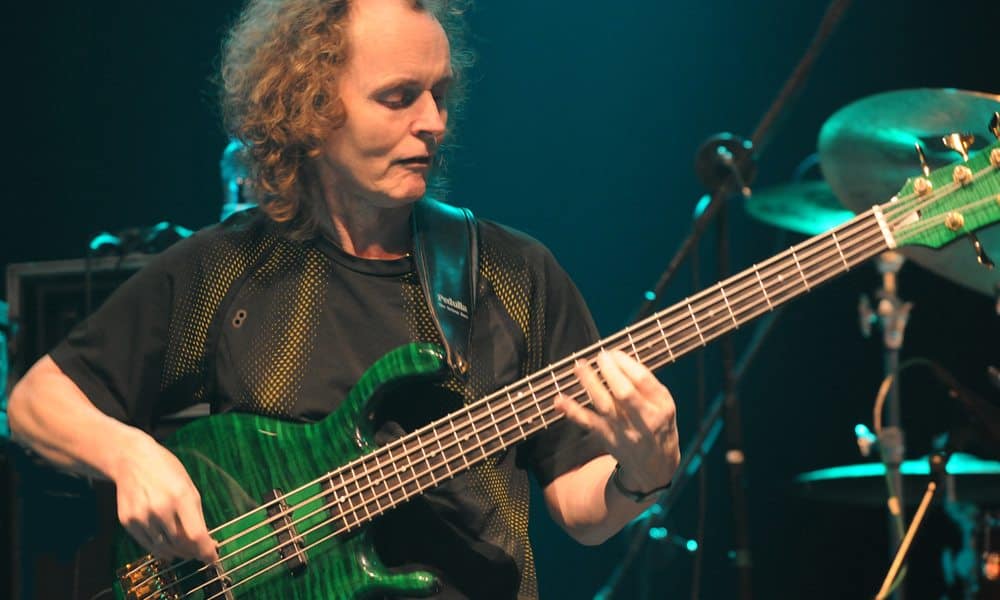
Mark Egan sat down with us to discuss Dreaming Spirits, recording the album, and to share news of upcoming endeavors.
Mark Egan, our July 2014 featured cover interview, has joined with percussionist Arjun Bruggeman to release Dreaming Spirits.

Mark’s signature bass tone washes together with Arjun’s wonderful tabla and frame drum playing to create expansive, meditative soundscapes that decorate the album. A prime example of the duo’s interplay can be heard on the track, “Mombassa”.
Mark and Arjun, who are longtime collaborators with Kirtan artist Krishna Das, are joined by guest guitarist Shane Theriot.

Shane’s playing integrates seamlessly with the duo and offers chances for great conversation with Mark’s bass lines, as in “Wave Motion”.
Mark sat down with Bass Musician Magazine to discuss Dreaming Spirits, recording the album, and to share news of upcoming endeavors.
I understand that you first started working with Arjun when you both played with Krishna Das?
Yes. I first met tabla player Arjun Bruggeman in 2008 at a recording session for Krishna Das in New York City. Guitarist, composer and producer, David Nichtern asked me to play on a project he was producing with Krishna Das. For those that don’t know Krishna Das, he is a spiritual teacher that performs Kirtan, which is a form of meditation in the format of all-and-response of Indian prayers and scriptures. He’s written, recorded and performed many songs with an instrumentation that is usually Harmonium, Voice, Tabla, Bass, Finger cymbals, guitar, violin and cello.

Since that first session with Krishna Das I’ve recorded and toured with he and Arjun in the United States. Bassist Mark Gorman also plays and records with Krishna Das on the west coast and in Hawaii.
From the very beginning, Arjun and I have had a great musical rapport playing together and have always talked about recording a project. Finally, last year in January, we got together and recorded all of the music that’s on the new Dreaming Spirits record.
What was your vision for the record, coming from the duo perspective?
Arjun and I had had spoken about what we wanted to do before we got together in the studio. We decided on some different time feels and different tempos; Arjun had some great ideas for tabla grooves and tone drum possibilities.
In preproduction I also had made some bass loops from a Roland RC3 Looped. I made some very long, extended ambient loops with volume pedal and two Lexicon PCM-42 delays with 10 seconds of delay. I also used the Strymon Time line effects delay pedal as well as the Strymon Blue Sky reverb pedal. These harmonic waves/beds are similar in some ways to the way that tabla functions in Indian music as a drone. Arjun and I improvised over these pre-recorded bass waves for some of the original sessions.
Additional pre-production ideas that I focused on were thinking of different key centers and tempos that I thought would be fun to experiment with and improvise over along with some specific bass line sketches and chord sequences that we could develop.
Most of the recording started as improvisations based on the above ideas and the basic concept was “Let’s do something in this tempo and in this type of feel and in this key and possibly around this tabla groove or bass line.”
We’ve played a lot over the last ten years and we know the different directions that we can explore. Our main focus was to be creative and enjoy doing it.
Arjun had a lot of ideas that he wanted to experiment with various drums that he had brought to the session. Arjun was originally a drummer so he not only plays tabla, but also frame drum that he plays on “Spirit Blues” and “Framonics”. He also played drums on some of tracks, tom-toms, cymbals and shakers. He also played tone drums, which are wooden drums that look like a box with carved wood tone bars that he plays these with his hands.

He came in with two songs that were basically solo pieces on the tone drums. One we later titled “Joy Ride” and the other is called “When Spirits Dance”. He recorded these pieces first solo and I then transcribed them and found bass lines and melodies and made the arrangements around his tone drum performance.
As post production evolved it seemed that we needed another voice for the instrumentation so I contacted guitarist Shane Theriot who I have been playing with for the last few years in the New York area. Shane is a very versatile guitarist and was the perfect choice to enhance the music that we had pre-recorded.
From the original two recording sessions with Arjun and myself and the addition of Shane’s great overdub sessions we had about two hours of music that now needed to be arranged and edited. I then spent about six months orchestrating, editing and producing. It was a lot of fun and creative to experiment with different bass melodies and effects. I was able to play my Pedulla 8-string fretless and 5-string fretless on backgrounds and melodies along with experimenting with different ambient effects. Even though I played bass on the original tracks, I added more bass melodies, effects and harmonies to the tracks and edited various jams into new pieces.
In the sessions, after the preproduction, you were playing together in the studio?
Yes, for the original sessions we set up facing each other as I was going direct with my bass, so there was no sound leakage from my bass into the tabla mics. All of the tabla and bass was recorded simultaneously. We later overdubbed tablas on top of songs with frame drum and various bass melodies on top of bass grooves. A few of the tracks such as “Village Call” started with just Tabla as Arjun played three different high tabla creating the melody which I later transcribed, double on bass and added bass chords. Later, Shane overdubbed Acoustic guitar strumming, lap slide guitar and electric guitar solo on the out vamp.
The songs on the album have a feeling of conversation in them. They feel very organic.
Whenever Arjun and I play we are always listening to each other and very much in the moment. As I mentioned, we have spent a lot of time playing together with Krishna Das over the last ten years. His music is very groove oriented and we always are having a musical conversation when we play together. We’ve spent hundreds and hundreds of hours in concert, so we know each other’s playing very well so being in the studio was an extension of that conversation and a very organic, evolving process.
One thing I really love is not only his sensitivity and the way that we can play together, but it’s not the typical odd-meter type of Indian music, which is sometimes more of the traditional music you associate with tabla. Arjun is an American and started playing drum set and percussion, and then he played tabla. He has a more Western approach to playing tabla even though he has studied and knows the tradition of classical Indian music. Arjun can play tabla with the sensibility of playing a drum kit with kick and snare.
But there’s another factor: the sound of my basses, the Pedulla fretless basses fit beautifully with tabla. Sonically the frequency range fits so well with the low tabla (bayan). When we lock in on a feel, it really becomes one sound with the bass and low tabla and I love that. That’s not dissimilar to locking in with a kick drum, but the tabla has a nice mid-range punch that I like with my basses. It’s a very alluring sound.
Your fretless comes across with a sound that resembles a vocalist.
The fretless bass can create a vocal sound because it’s like a cello; that’s one of the reasons why I’m so attracted to it. It has much more sustain than a fretted bass and you can play microtonaly around the pitch, which gives it that vocal quality.
Another reason the fretless bass speaks on this project is that the recording is very open and sparse, because of the orchestration. With such an open instrumentation it allowed me to be expressive with my fretless basses and fill in different spaces. Whereas if there were 4-5 musicians playing with a full drum set, I wouldn’t want to take up as much space and would play accordingly. In this case it was such an open canvas that it allowed me to really experiment and react to the tabla and guitar.
Let’s talk about Shane’s contribution to the album. How did he become involved?
After Arjun and I recorded the three days of duo sessions, I was starting to edit and do post-production by adding s bass melodies and bass pads over the tracks. I realized that we had recorded lot of music and it would be nice to have another voice on the project. I didn’t want to fill it up with all basses because it would have been too much and be monotonous, so I had the idea to add guitar. I had recently been playing with Shane in New York on a date at Richard Bona’s club called Club Bonafied with vibist Steve Shapiro. I asked Shane if he would be available to record at my studio in Connecticut to enhance what Arjun and I had just recorded.

I asked him if he played acoustic, which most guitar players do, but most just play it as a second instrument, but he really plays it as well as electric, just beautifully. I sent him some MP3’s of what Arjun and I had recorded along with some of the basic charts for the forms.
When he came to the sessions he had done a lot of homework and came up with several altered tunings for his acoustic guitar. Even though some of the songs were in E minor or D major or B major, that he could have just played on the [standard tuned] acoustic, he had interesting altered guitar tunings for the songs which created different timbres and made him play different parts. When you do altered tunings on a guitar or bass, it’s a whole different universe of chord and melody fingerings and you have to figure out different parts as you go. He came with altered tunings for each song. I was so impressed that he had spent a lot of time on it and really spent time learning the music.
He had great sensibilities about the guitar approach for each song. For instance, on songs where the bass was featured predominantly as melody, he came up with really interesting acoustic rhythm parts that added a groove that he then doubled. He then would add lap slide guitar in places, which created pads in the background somewhat like synth pads. We later added a lot of ambience with reverb and delay that created more depth of field in the mix.
There were times where I didn’t play a bass solo, because I didn’t want to play bass solos 3 or 4 times on the same song. Shane played some great solos and he totally fit into the feeling of what we were doing on the original tracks. He really had the vibe of what we had recorded initially with the duo – so much so that it sounds like we recorded the music all, together in an organic way.
That’s the sign of a really gifted player (Shane), that he can immerse himself and superimpose himself onto something that’s there and really become a part of it and be in the moment of it. He’s a very talented player.
Let’s talk about the recording side and how you recorded your bass.
I played my Pedulla basses direct through two Millennia TD-1 mic preamps with EQ. I also went direct through two Radial JDI direct boxes for some of the overdubs. I recorded in stereo using two lexicon digital delays along with effects such as Strymon timeline, Stymon Blue Sky and TC Electronics Chorus.
I didn’t use compression on the basic tracks but later in the mixing used a few plugins for compression and EQ.
Do you have dual pickups on your bass, then?
I have two pickups (P/J) but one ¼ ouput on my basses, so a mono output. I went mono out of my bass into stereo effects. In this case I used 2 Lexicon PCM 42’s and on some tracks I first went into a TC Electronics chorus. The left and right signals then went into two Lexicon Digital Delays which I used for delays and looping. Out of the delays I went into two Radial JDI direct boxes then into the mic pres. From the mic pres I went directly in the ProTools HDX system.
The bass is really less of a pure solo feature on the album and instead adds presence to the songs. The melodic content in your solos is amazing.
Thank you…
The music took on its own life when we started playing and recording. I think the sound of Arjun playing tabla and his sensibilities and the way that he grooves along with all of my past sensibilities and experiences made me react to the sonic spaces and play more impressionistically rather than just solo above everything. I felt like I played inside the sphere of the music and was just reacting to the spaces that we were creating. I had no awareness or desire to try to play with more of a solo feature. The music didn’t call for that and I generally don’t like to go in that direction.
When I did solo it was more from a melodic approach and inspired by the setup of the space.
I feel like this album is a very personal statement because of the openness of the orchestration and the overall tone of the recording.
On the first track, “Village Call” the bass improvises throughout the A sections over a Maj #11. The intent was more of a collective improvisation even though the bass is featured.
In recording this project Arjun and I weren’t trying to be commercial or come up with airplay material. The only goal was to sit down and play improvised honest music. It was all about what was in the moment and I love to play that way.
What’s coming up next for you?
We are producing a video of the trio about the making of the CD as well as some live performances in the studio that will be on YouTube and social media. We’ll hopefully be doing some live dates as a trio in the Northeast.
Another project that I’m working on is a duo record with Danny Gottlieb, drums and bass. Danny and I go way back to our days at the University of Miami and the Pat Metheny group experience. We have recorded several sessions that feature compositions and improvisations that draw form our 47 years of playing together. It’s a very open project with multi tracked drums and basses and features our experimental side of things. That will be released later this year.
I’m also working on a record with drummer Karl Latham and guitarist Vic Juris that is a follow up to Karl’s last recording “Living Standards” where we recorded modern standards such as
“Riders on the Storm”, “Tax Man”, “Day Tripper” etc. It’s so much fun playing with this trio as
Karl and Vic are team players and great musicians.
I am also a member of the Outreach Orchestra that performs every summer in Austria with great players from New York and Europe. It is a player/composers collective and very creative ensemble.

Follow Mark On the web:
Features
Alberto Rigoni On Unexpected Lullabies
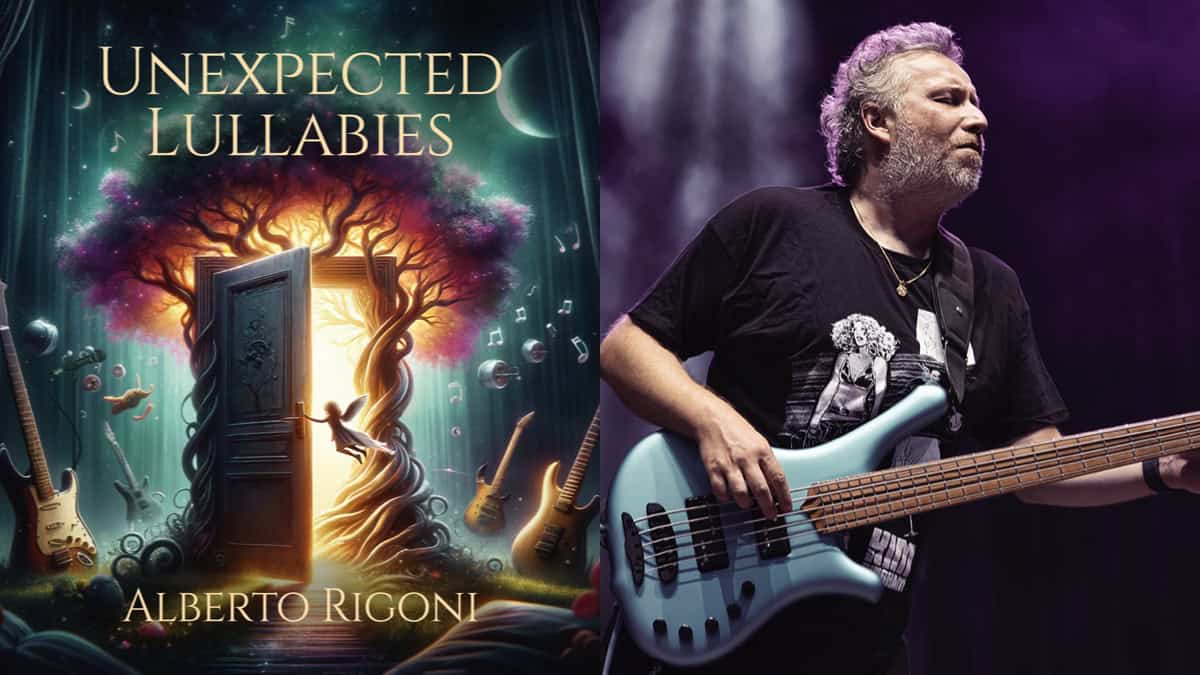
Readers have been fans of the composer, bass player, and Bass Musician contributor Alberto Rigoni for some time now.
In this interview, we had the opportunity to hear directly from Alberto about his love of music and a project near and dear to his heart, “Unexpected Lullabies”…
Could you tell our readers what makes your band different from other artists?
In 2005, I felt the urge to write original music. My first track was “Trying to Forget,” an instrumental piece with multiple bass layers (rhythm, solo, and arrangement), similar to the Twin Peaks soundtrack. When I played it for a few people, they really liked it, and I decided to continue composing based on my instinct and ear without adhering to any specific genre. In 2007, I released “Something Different” with Lion Music. The title says it all! Since then, I’ve released many solo albums, each different from the others, ranging from ambient to prog, fusion, jazz, and new age. I am very eclectic!
How did you get involved in this crazy world of music?
As a child, I listened to the music my parents enjoyed: my dad loved classical music, while my mom was into Pink Floyd, Genesis, Duran Duran, etc. These influences left a significant mark on my life. However, the turning point came at 15 when a drummer friend played me “A Change of Seasons” by Dream Theater, which was a shock! From that moment, I decided to play bass and cover Dream Theater songs, which I did for many years with my cover band, Ascra, until it disbanded in 2004. After that, I joined TwinSpirits (prog rock) led by multi-instrumentalist Daniele Liverani. Since then, I haven’t played any more covers!
Who are your musical inspirations, and what inspired the album and the songs?
My roots are in progressive rock metal, with influences from bands like Dream Theater, Symphony X, and many others. However, I listen to all genres and try to keep an open mind, which helps me compose original music. On bass, I was significantly inspired by Michael Manring and Randy Coven (bassist of Ark, Steve Vai, etc.). But I don’t have a real idol; I just follow my own path without compromise.
What are your interests outside of music?
Living in Italy, I love good food and wine! Beyond that, I have a deep interest in art in general and history, not just of my country. I enjoy spending time with friends, skiing, biking, and walking in nature. This is how I spend my free time. The rest of my time is devoted to music and my family!
Tell us about the new album.
It is definitely an out-of-the-box album. When I found out last year that I was going to have a baby girl, I decided to compose a sort of lullaby album, but I didn’t want to cover already famous lullabies. So, I started composing new tunes with the goal of creating an album that was half-sweet and half-hard rock. I did include some covers like “Strangers in the Night” by Frank Sinatra, sung by Goran Edman, former lead singer of Malmsteen. It’s not exactly a lullaby, but I felt the lyrics fit the album, as does the instrumental version of “Fly Me to The Moon.” There are also tracks with just bass and piano (Nenia) or two basses (Vicky). It was definitely an interesting creative process!
What is the difference between the new album and your previous releases, and will there be any new material from your other outfit called BAD AS?
BAD AS is essentially a metal band with several influences including prog. My solo genre is quite different, although there are some metal songs on a few albums. It’s always difficult for me to categorize my music… let’s say it’s a mix of prog, ambient, fusion, and new age.
Where was the album recorded, who produced it, and how long did the process take?
I produced my last album entirely by myself, including mixing and mastering. Unlike other albums I’ve produced within a few months, this one took much longer, perhaps because I was very busy or maybe because I wanted it to be perfect for my daughter, who is now three months old. In any case, I am satisfied. Once again, I did something different from my previous albums.
What is the highlight of the album for you and why?
My favorite song is the first track titled “Vittoria,” named after my daughter. It’s the intro to the record and isn’t very long, but the melody stuck in my head. Another standout track is the instrumental version of “Fly Me to The Moon” by Frank Sinatra, where I used fretless bass. The first part is sweet, the second part definitely rocks!
How are the live shows going, and what are you and the band hoping to achieve?
With BAD AS, this year we shared the stage with David Ellefson’s (former Megadeth bassist) band and talented young singer Dino Jelusik (White Snake). We plan to continue performing all over Europe!
What’s in store for the future?
I am working on an instrumental project called Nemesis Call, a progressive shred prog metal album with various influences. It will feature guest appearances from famous musicians like drummers Mike Terrana and Thomas Lang, as well as young talents like Japanese guitarist Keiji from Zero (19), 14-year-old Indian drummer Sajan Young, and guitarists Alexandra Zerner and Alexandra Lioness, Hellena Pandora. It’s scheduled for release at the end of the year or early 2025. As an independent artist, I have launched a fundraising campaign with exclusive pledges at www.albertorigoni.net/nemesiscall. And no, I am not begging; the album will be released anyway!
What formats is the release available in?
Unexpected Lullabies is available both as a Digipack CD and on streaming platforms.
What is the official album release date?
June 4th, 2024.
Thanks for this interview Bass Musician Magazine and for the continued support to my career!
Visit Online:
www.albertorigoni.net
www.youtube.com/albertorigoni
albertorigoni.bandcamp.com
www.instagram.com/albertorigonibassplayer
www.facebook.com/albertorigonimusic
www.tiktok.com/@albertorigonibassist
CD Track Listing:
1. Vittoria
2. Fly Me to the Moon
3. Azzurra
4. Dancing with Tears in My Eyes (feat. John Jeff Touch)
5. Out of Fear
6. Veni Laeatitia (feat. Alexandra Zerner)
7. Nenia
8. Slap Lullaby (feat. Karl Clews)
9. Saga
10. Vicky (feat. Michael Manring)
11. Ocean Travelers (feat. Vitalij Kuprij)
12. Strangers in the Night (feat. Göran Edman)
13. Peaceful
14. Un uomo che voga (feat. Eleonora Damiano)
Band Line-Up:
- Tommaso Ermolli arrangements on “Vittoria”
- Sefi Carmel on “Fly Me to the Moon” (Cover) (except for the keyboard solo by Alessandro Bertoni)
- Piano and keyboards by Alessandro Bertoni on “Azzurra”
- Leonardo Caverzan, guitars, and John Jeff Touch, vocals on “Dancing with Tears in my Eyes” (Cover)
- T. Ermolli keys on “Out of Fear”
- Alexandra Zerner everything on “Veni Laetitia”
- Daniele Bof piano on “Nenia”
- Karl Clews, piccolo bass on “Slap Lullaby”
- Jonas Erixon vocals and guitars on “Saga”
- Michael Manring bass on “Vicky”
- Vitalij Kuprij, keyboards and piano, and Josh Sapna, guitars, on “Ocean Traveler”
- Göran Edman, vocals, Emiliano Tessitore, guitars, Emiliano Bonini, drums, on “Strangers in the Night” (Cover) everything by Alberto Rigoni and vocals by Federica “Faith”
- Sciamanna on “Peaceful”
- T. Ermolli, guitars, and Eleonora Damiano, vocals, on “Un uomo che voga All drums programmed by Alberto Rigoni
Bass Books
Interview With Barker Bass’s Inventor and Writer Lee Barker
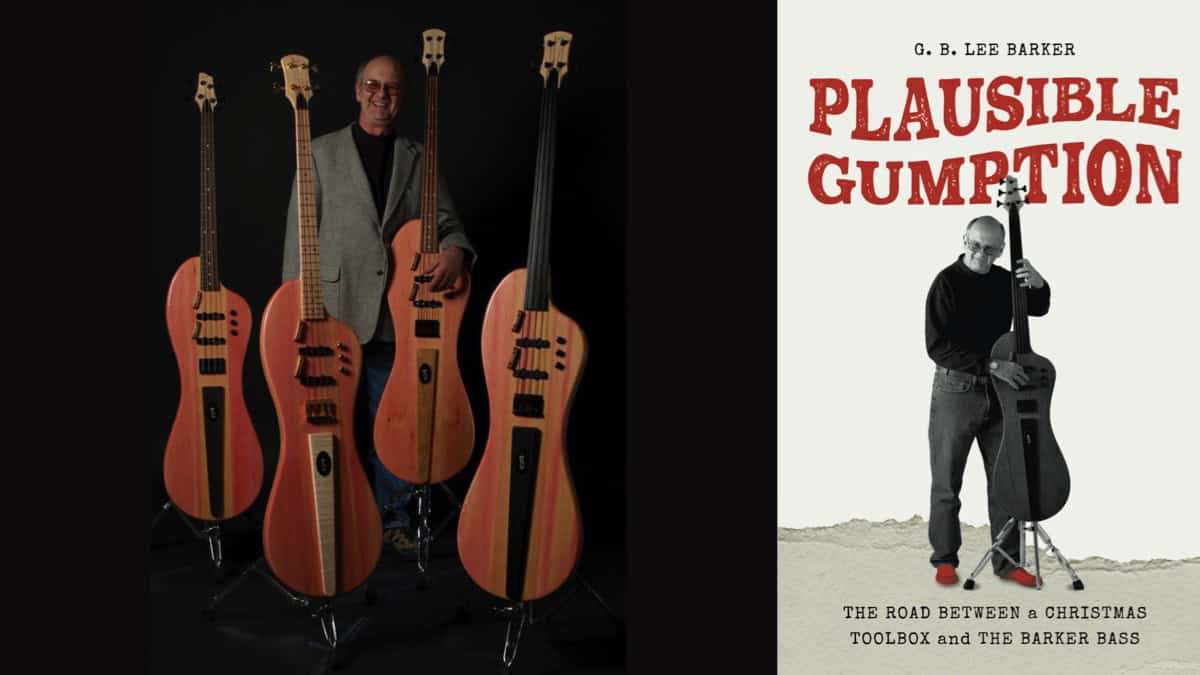
If you are an electric bass player, this is an exciting time to be alive as this relatively new instrument evolves around us. Some creative individuals have taken an active role in this evolution and made giant leaps in their own direction. Lee Barker is one of these inventive people having created the Barker Bass.
Fortunately, Lee is also an excellent writer (among so many talents) and has recently released his book “Plausible Gumption, The Road Between a Christmas Toolbox and The Barker Bass”. This book is a very fun read for everyone and shares a ton of details about Lee’s life in general, his experiences as a musician, a radio host, and a luthier. Now I am fortunate to have the great opportunity to gain even more insights into this renaissance man with this video interview.
Plausible Gumption, The Road Between a Christmas Toolbox and The Barker Bass is available online at Amazon.com
Features
Bergantino Welcomes Michael Byrnes to Their Family of Artists
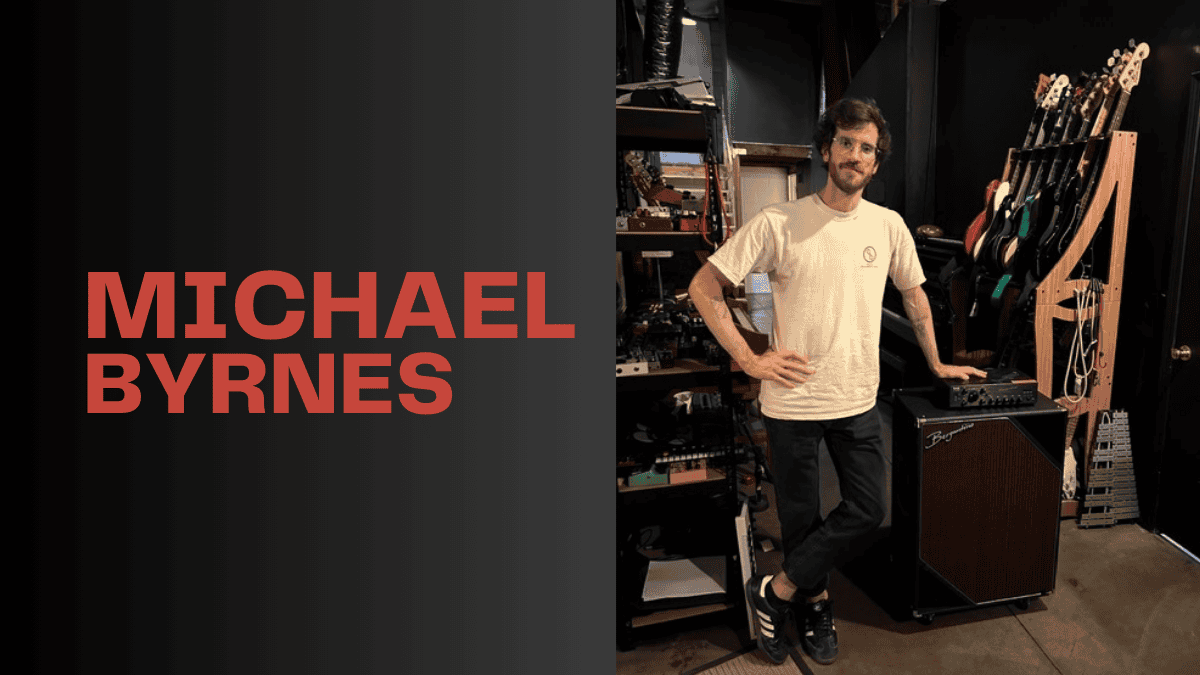
Interview and photo courtesy of Holly Bergantino of Bergantino Audio Systems
With an expansive live show and touring, Mt. Joy bassist Michael Byrnes shares his experiences with the joyful, high-energy band!
Michael Byrnes has kept quite a busy touring schedule for the past few years with his band, Mt. Joy. With a philosophy of trial and error, he’s developed quite the routines for touring, learning musical instruments, and finding the right sound. While on the road, we were fortunate to have him share his thoughts on his music, history, and path as a musician/composer.
Let’s start from the very beginning, like all good stories. What first drew
you to music as well as the bass?
My parents required my sister and I to play an instrument. I started on piano and really didn’t like it so when I wanted to quit my parents made me switch to another instrument and I chose drums. Then as I got older and started forming bands there were never any bass players. When I turned 17 I bought a bass and started getting lessons. I think with drums I loved music and I loved the idea of playing music but when I started playing bass I really got lost in it. I was completely hooked.
Can you tell us where you learned about music, singing, and composing?
A bit from teachers and school but honestly I learned the most from just going out and trying it. I still feel like most of the time I don’t know what I am doing but I do know that if I try things I will learn.
What other instruments do you play?
A bit of drums but that’s it. For composing I play a lot of things but I fake it till I make and what I can’t fake I will ask a friend!
I know you are also a composer for film and video. Can you share more
about this with us?
Pretty new to it at the moment. It is weirdly similar to the role of a bass player in the band. You are using music to emphasize and lift up the storyline. Which I feel I do with the bass in a band setting. Kind of putting my efforts into lifting the song and the other musicians on it.
Everybody loves talking about gear. How do you achieve your “fat” sound?
I just tinker till it’s fat lol. Right now solid-state amps have been helping me get there a little quicker than tube amps. That’s why I have been using the Bergantino Forté HP2 – Otherwise I have to say the cliche because it is true…. It’s in the hands.
Describe your playing style(s), tone, strengths and/or areas that you’d like
to explore on the bass.
I like to think of myself as a pretty catchy bass player. I need to ask my bandmates to confirm! But I think when improvising and writing bass parts I always am trying to sneak little earworms into the music. I want to explore 5-string more!
Who are your influences?
I can’t not mention James Jamerson. Where would any of us be if it wasn’t for him? A lesser-known bassist who had a huge effect on me is Ben Kenney. He is the second bassist in the band Incubus and his playing on the Crow Left the Murder album completely opened me up to the type of bass playing I aspire towards. When I first started playing I was really just listening to a lot of virtuosic bassists. I was loving that but I couldn’t see myself realistically playing like that. It wasn’t from a place of self-doubt I just deep down knew that wasn’t me. Ben has no problem shredding but I was struck by how much he would influence the song through smaller movements and reharmonizing underneath the band. His playing isn’t really in your face but from within the music, he could move mountains. That’s how I want to play.
What was the first bass you had? Do you still have it?
A MIM Fender Jazz and I do still have it. It’s in my studio as we speak. I rarely use it these days but I would never get rid of it.
(Every bass player’s favorite part of an interview and a read!) Tell us about
your favorite bass or basses. 🙂
I guess I would need to say that MIM Jazz bass even though I don’t play it much. I feel connected to that one. Otherwise, I have been playing lots of great amazing basses through the years. I have a Serek that I always have with me on the road (shout out Jake). Also have a 70’s Mustang that 8 times out of 10 times is what I use on recordings. Otherwise, I am always switching it up. I find that after a while the road I just cycle basses in and out. Even if I cycle out a P bass for another P bass.
What led you to Bergantino Audio Systems?
My friend and former roommate Edison is a monster bassist and he would gig with a cab of yours all the time years ago. Then when I was shopping for a solid state amp the Bergantino Forté HP2 kept popping up. Then I saw Justin Meldal Johnsen using it on tour with St. Vincent and I thought alright I’ll give it a try!
Can you share a little bit with us about your experience with the Bergantino
forte HP amplifier? I know you had this out on tour in 2023 and I am pretty
certain the forte HP has been to more countries than I have.
It has been great! I had been touring with a 70’s SVT which was great but from room to room, it was a little inconsistent. I really was picky with the type of power that we had on stage. After a while, I thought maybe it is time to just retire this to the studio. So I got that Forte because I had heard that it isn’t too far of a leap from a tube amp tone-wise. Plus I knew our crew would be much happier loading a small solid state amp over against the 60 lbs of SVT. It has sounded great and has really remained pretty much the same from night to night. Sometimes I catch myself hitting the bright switch depending on the room and occasionally I will use the drive on it.
You have recently added the new Berg NXT410-C speaker cabinet to your
arsenal. Thoughts so far?
It has sounded great in the studio. I haven’t gotten a chance to take it on the road with us but I am excited to put it through the paces!
You have been touring like a madman all over the world for the past few
years. Any touring advice for other musicians/bass players? And can I go to Dublin, Ireland with you all??
Exercise! That’s probably the number one thing I can say. Exercise is what keeps me sane on the road and helps me regulate the ups and downs of it. Please come to Dublin! I can put you on the guest list!
It’s a cool story on how the Mt. Joy band has grown so quickly! Tell us
more about Mt. Joy, how it started, where the name comes from, who the
members are and a little bit about this great group?
Our singer and guitarist knew each other in high school and have made music together off and on since. Once they both found themselves living in LA they decided to record a couple songs and put out a Craigslist ad looking for a bassist. At the time I had just moved to LA and was looking for anyone to play with. We linked up and we recorded what would become the first Mt. Joy songs in my house with my friend Caleb producing. Caleb has since produced our third album and is working on our fourth with us now. Once those songs came out we needed to form a full band to be able to do live shows. I knew our drummer from gigging around LA and a mutual friend of all of us recommended Jackie. From then on we’ve been on the road and in the studio. Even through Covid.
Describe the music style of Mt. Joy for me.
Folk Rock with Jam influences
What are your favorite songs to perform?
Always changing but right now it is ‘Let Loose’
What else do you love to do besides bass?
Exercise!
I always throw in a question about food. What is your favorite food?
I love a good chocolate croissant.
Follow Michael Byrnes:
Instagram: @mikeyblaster
Follow Mt. Joy Band:
Instagram: https://www.instagram.com/mtjoyband
Facebook: https://www.facebook.com/mtjoyband
Bass Videos
Artist Update With Mark Egan, Cross Currents
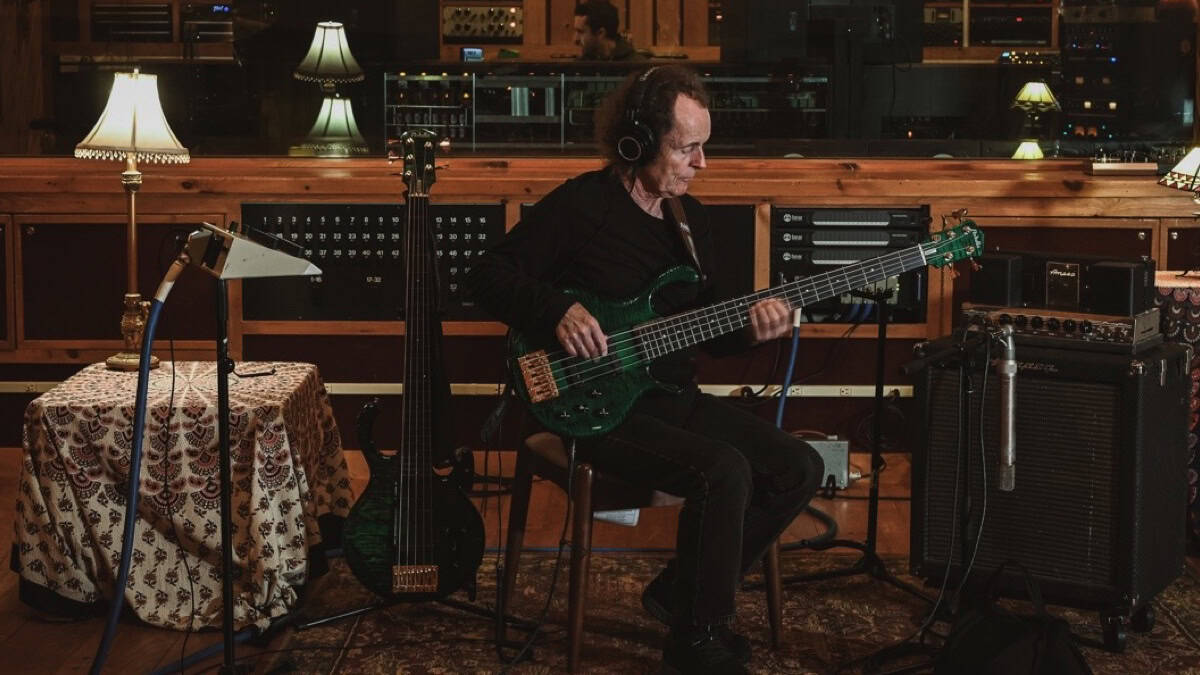
I am sure many of you are very familiar with Mark Egan as we have been following him and his music for many years now. The last time we chatted was in 2020.
Mark teamed up with drummer Shawn Pelton and guitarist Shane Theriot to produce a new album, “Cross Currents” released on March 8th, 2024. I have been listening to this album in its entirety and it is simply superb (See my review).
Now, I am excited to hear about this project from Mark himself and share this conversation with our bass community in Bass Musician Magazine.
Photo courtesy of Mark Egan
Visit Online:
markegan.com
markegan.bandcamp.com
Apple Music
Amazon Music
Bass Videos
Interview With By the Thousands Bassist Adam Sullivan
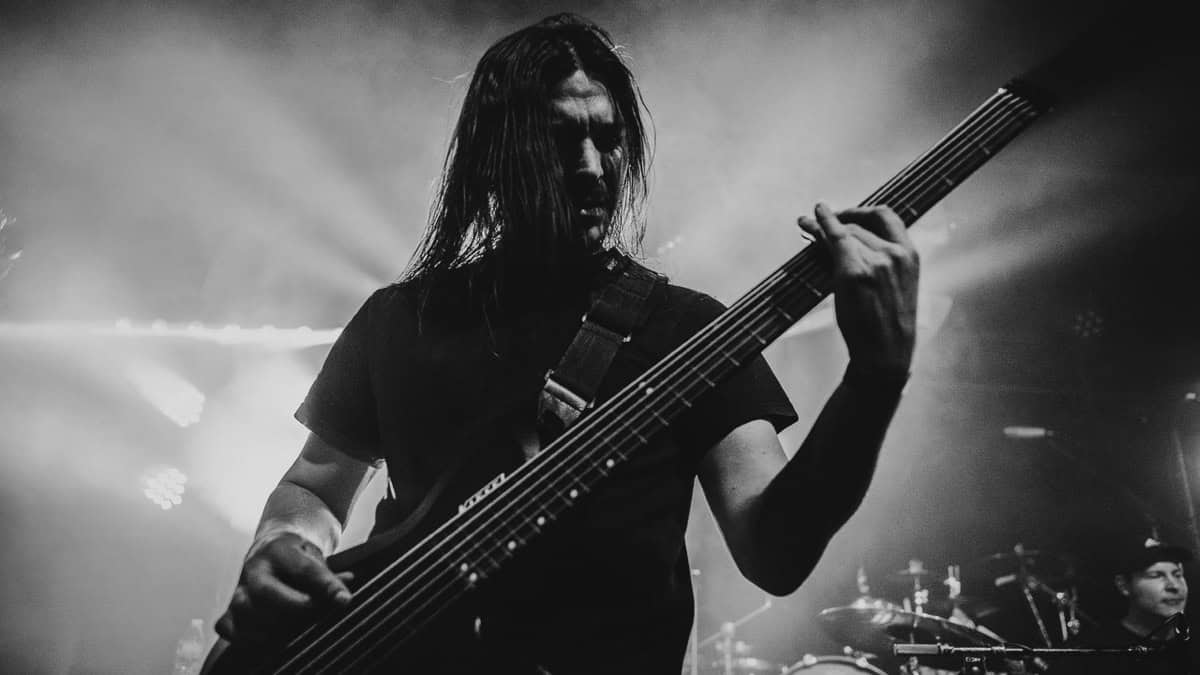
Bassist Adam Sullivan…
Hailing from Minnesota since 2012, By the Thousands has produced some serious Technical Metal/Deathcore music. Following their recent EP “The Decent”s release, I have the great opportunity to chat with bassist Adam Sullivan.
Join me as we hear about Adam’s musical Journey, his Influences, how he gets his sound, and the band’s plans for the future
Photo, Laura Baker
Featured Videos:
Follow On Social
IG &FB @bythethousands
YTB @BytheThousands





















